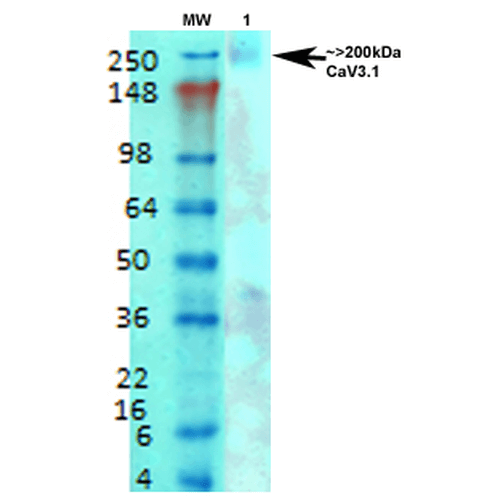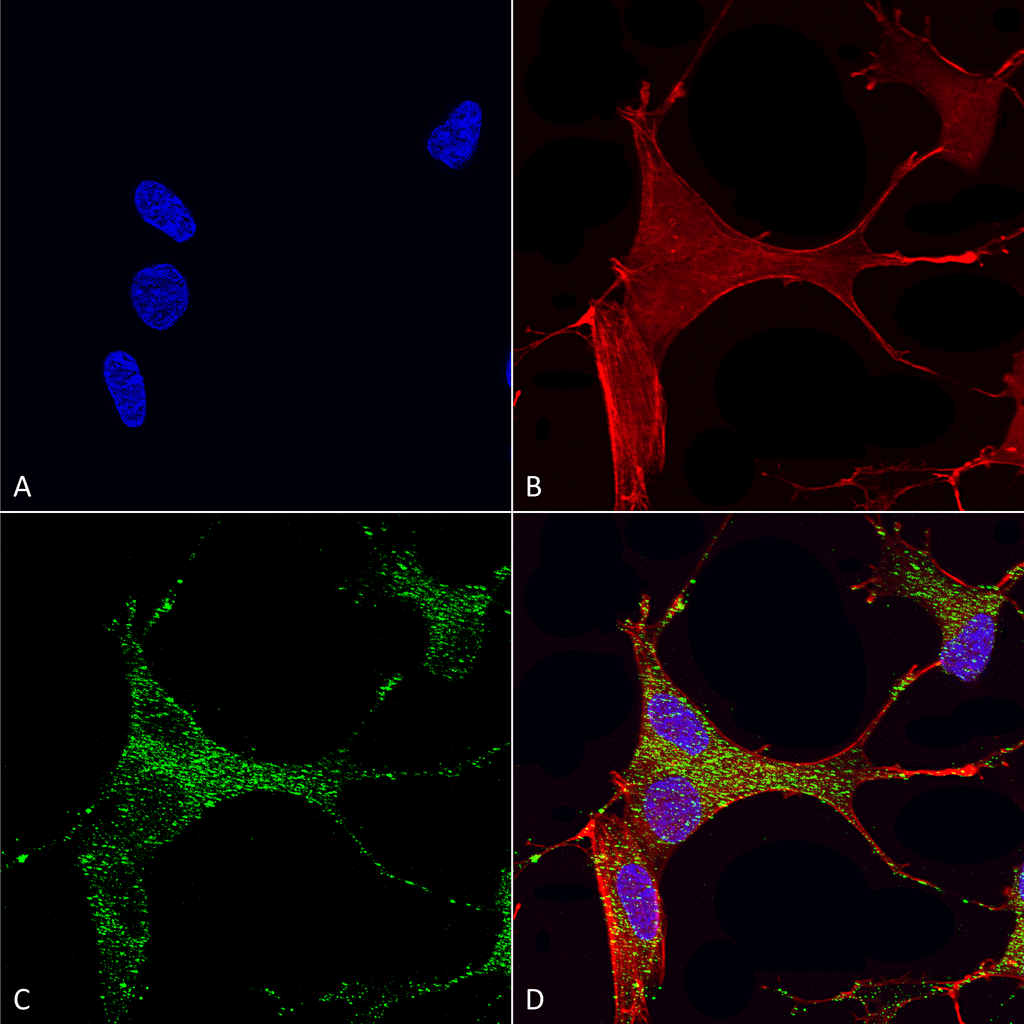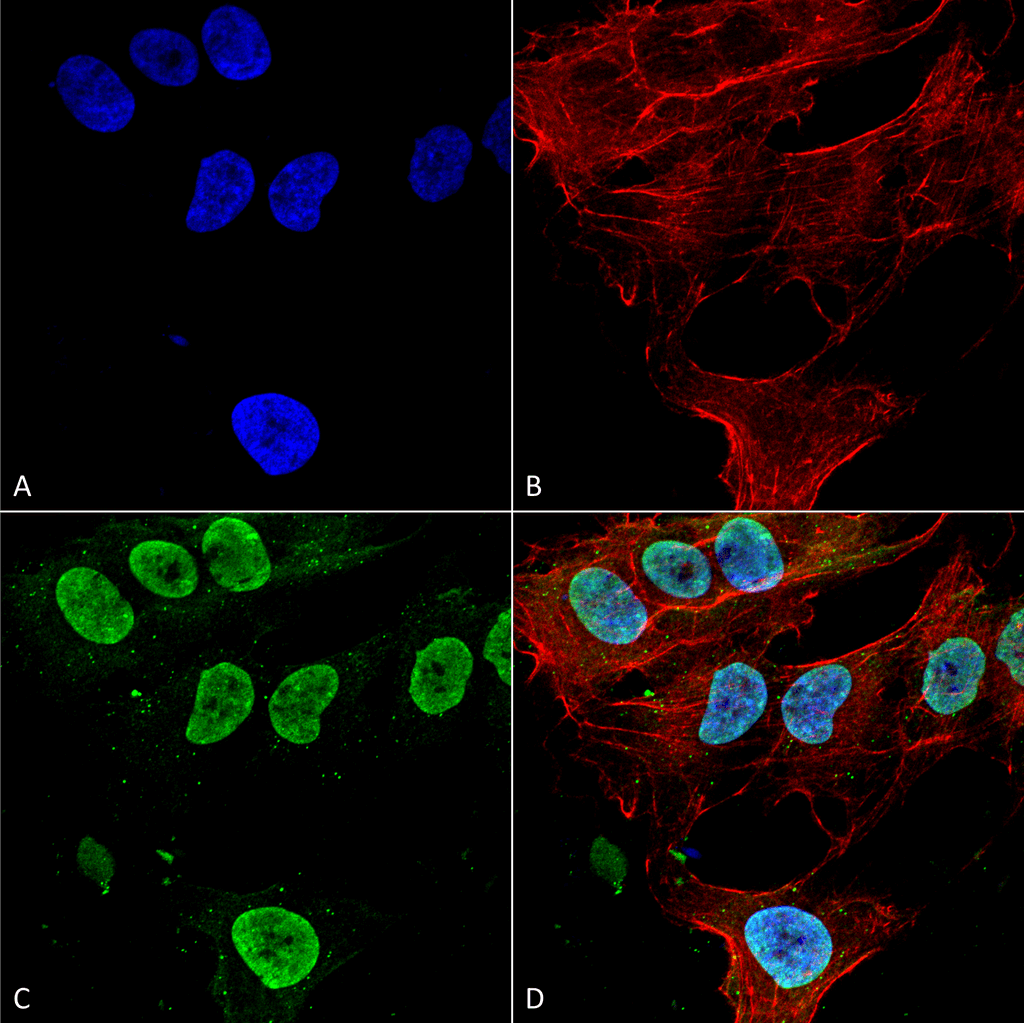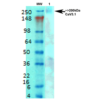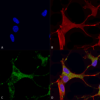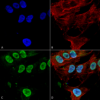Anti-Cav3.1 Ca+2 Channel Antibody (11565)
$466.00
| Host | Quantity | Applications | Species Reactivity | Data Sheet | |
|---|---|---|---|---|---|
| Mouse | 100ug | WB,IHC,ICC/IF | Human, Mouse, Rat |  |
SKU: 11565
Categories: Antibody Products, Ion Channel Antibodies, Products
Overview
Product Name Anti-Cav3.1 Ca+2 Channel Antibody (11565)
Description Anti-Cav3.1 Ca+2 Channel Mouse Monoclonal Antibody
Target Cav3.1 Ca+2 Channel
Species Reactivity Human, Mouse, Rat
Applications WB,IHC,ICC/IF
Host Mouse
Clonality Monoclonal
Clone ID S178A-9
Isotype IgG1
Immunogen Fusion protein corresponding to aa 2052-2172 (cytoplasmic C-terminus) of mouse Cav3.1 (accession no. NP_001106284.1).
Properties
Form Liquid
Concentration Lot Specific
Formulation PBS, pH 7.4; 50% glycerol, 0.09% sodium azide.
Buffer Formulation Phosphate Buffered Saline
Buffer pH pH 7.4
Buffer Anti-Microbial 0.09% Sodium Azide
Buffer Cryopreservative 50% Glycerol
Format Purified
Purification Purified by Protein G affinity chromatography
Specificity Information
Specificity This antibody recognizes human, mouse, and rat Cav3.1. It does not cross-react with Cav3.2.
Target Name Voltage-dependent T-type calcium channel subunitα
Target ID Cav3.1 Ca+2 Channel
Uniprot ID Q9WUT2
Gene Name Cacna1g
Accession Number NP_001106284.1
Research Areas Ion Channels
Background Ion channels are integral membrane proteins that help establish and control the small voltage gradient across the plasma membrane of living cells by allowing the flow of ions down their electrochemical gradient. Cav3.1 is a low-voltage- activated T-type calcium channel expressed throughout the body. Drugs that block T-type calcium channels are used as antihypertensives and antiepileptics and possibly in some anesthetics and antipsychotics.
Application Images




Description Western Blot analysis of Rat brain membrane lysate showing detection of Cav3.1 Calcium Channel protein using Mouse Anti-Cav3.1 Calcium Channel Monoclonal Antibody, Clone S178A-9 (11565). Primary Antibody: Mouse Anti-Cav3.1 Calcium Channel Monoclonal Antibody (11565) at 1:1000.

Description Immunocytochemistry/Immunofluorescence analysis using Mouse Anti-Cav3.1 Monoclonal Antibody, Clone S178A-9 (11565). Tissue: Neuroblastoma cells (SH-SY5Y). Species: Human. Fixation: 4% PFA for 15 min. Primary Antibody: Mouse Anti-Cav3.1 Monoclonal Antibody (11565) at 1:50 for overnight at 4°C with slow rocking. Secondary Antibody: AlexaFluor 488 at 1:1000 for 1 hour at RT. Counterstain: Phalloidin-iFluor 647 (red) F-Actin stain; Hoechst (blue) nuclear stain at 1:800, 1.6mM for 20 min at RT. (A) Hoechst (blue) nuclear stain. (B) Phalloidin-iFluor 647 (red) F-Actin stain. (C) Cav3.1 Antibody (D) Composite.

Description Immunocytochemistry/Immunofluorescence analysis using Mouse Anti-Cav3.1 Monoclonal Antibody, Clone S178A-9 (11565). Tissue: Neuroblastoma cell line (SK-N-BE). Species: Human. Fixation: 4% Formaldehyde for 15 min at RT. Primary Antibody: Mouse Anti-Cav3.1 Monoclonal Antibody (11565) at 1:100 for 60 min at RT. Secondary Antibody: Goat Anti-Mouse ATTO 488 at 1:200 for 60 min at RT. Counterstain: Phalloidin Texas Red F-Actin stain; DAPI (blue) nuclear stain at 1:1000, 1:5000 for 60 min at RT, 5 min at RT. Localization: Cell Membrane, Membrane, Cytoplasm, Nucleoplasm. Magnification: 60X. (A) DAPI (blue) nuclear stain. (B) Phalloidin Texas Red F-Actin stain. (C) Cav3.1 Antibody. (D) Composite.
Handling
Storage This antibody is stable for at least one (1) year at -20°C.
Dilution Instructions Dilute in PBS or medium which is identical to that used in the assay system.
Application Instructions Immunoblotting: use at 1-2ug/mL. A band of >200kDa is detected.
Immunohistochemistry: use at 1-10ug/mL.
These are recommended concentrations. User should determine optimal concentrations for their application.
Positive control: Rat brain membranes.
Immunohistochemistry: use at 1-10ug/mL.
These are recommended concentrations. User should determine optimal concentrations for their application.
Positive control: Rat brain membranes.
References & Data Sheet
Data Sheet  Download PDF Data Sheet
Download PDF Data Sheet
 Download PDF Data Sheet
Download PDF Data Sheet

